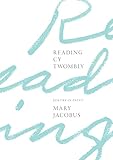Reading Cy Twombly : Poetry in Paint / Mary Jacobus.
Material type: TextPublisher: Princeton, NJ : Princeton University Press, [2016]Copyright date: ©2016Description: 1 online resource : 96 color illus. 37 halftonesContent type:
TextPublisher: Princeton, NJ : Princeton University Press, [2016]Copyright date: ©2016Description: 1 online resource : 96 color illus. 37 halftonesContent type: - 9780691170725
- 9781400883288
- 709.2 23
- ND237.T87 J33 2016
- online - DeGruyter
- Issued also in print.
| Item type | Current library | Call number | URL | Status | Notes | Barcode | |
|---|---|---|---|---|---|---|---|
 eBook
eBook
|
Biblioteca "Angelicum" Pont. Univ. S.Tommaso d'Aquino Nuvola online | online - DeGruyter (Browse shelf(Opens below)) | Online access | Not for loan (Accesso limitato) | Accesso per gli utenti autorizzati / Access for authorized users | (dgr)9781400883288 |
Browsing Biblioteca "Angelicum" Pont. Univ. S.Tommaso d'Aquino shelves, Shelving location: Nuvola online Close shelf browser (Hides shelf browser)

|

|

|

|

|

|

|
||
| online - DeGruyter Trans : Gender and Race in an Age of Unsettled Identities / | online - DeGruyter The Genome Factor : What the Social Genomics Revolution Reveals about Ourselves, Our History, and the Future / | online - DeGruyter Game of Loans : The Rhetoric and Reality of Student Debt / | online - DeGruyter Reading Cy Twombly : Poetry in Paint / | online - DeGruyter Fraud : An American History from Barnum to Madoff / | online - DeGruyter The Wisdom of Frugality : Why Less Is More - More or Less / | online - DeGruyter The Quotable Machiavelli / |
Frontmatter -- Contents -- Preface and Acknowledgments -- Introduction: Twombly's Books -- Mediterranean Passages: Retrospect -- Psychogram and Parnassus: How (Not) to Read a Twombly -- Twombly's Vagueness: The Poetics of Abstraction -- Achilles' Horses, Twombly's War -- Romantic Twombly -- The Pastoral Stain -- Psyche: The Double Door -- Twombly's Lapse -- Postscript: Writing in Light -- Notes -- Bibliography -- Index
Many of Cy Twombly's paintings and drawings include handwritten words and phrases-naming or "ing poets ranging from Sappho, Homer, and Virgil to Mallarmé, Rilke, and Cavafy. Enigmatic and sometimes hard to decipher, these inscriptions are a distinctive feature of his work. Reading Cy Twombly poses both literary and art historical questions. How does poetic reference in largely abstract works affect their interpretation?Reading Cy Twombly is the first book to focus specifically on the artist's use of poetry. Twombly's library formed an extension of his studio and he sometimes painted with a book open in front of him. Drawing on original research in an archive that includes his paint-stained and annotated books, Mary Jacobus's account-richly illustrated with more than 125 color and black-and-white images-unlocks an important aspect of Twombly's practice.Jacobus shows that poetry was an indispensable source of reference throughout Twombly's career; as he said, he "never really separated painting and literature." Among much else, she explores the influence of Ezra Pound and Charles Olson; Twombly's fondness for Greek pastoral poetry and Virgil's Eclogues; the inspiration of the Iliad and Ovid's Metamorphoses; and Twombly's love of Keats and his collaboration with Octavio Paz.Twombly's art reveals both his distinctive relationship to poetry and his use of "ation to solve formal problems. A modern painter, he belongs in a critical tradition that goes back, by way of Roland Barthes, to Baudelaire. Reading Cy Twombly opens up fascinating new readings of some of the most important paintings and drawings of the twentieth century.
Issued also in print.
Mode of access: Internet via World Wide Web.
In English.
Description based on online resource; title from PDF title page (publisher's Web site, viewed 23. Mai 2019)


